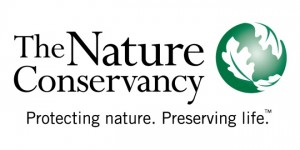In part two of our three-part special, P.J Ryan – author at the excellent National Parks Traveler – treats us to an in depth look at the work of The Nature Conservancy – America’s leading conservation organization. Acclaimed for their work to protect ecologically important lands and waters, The Nature Conservancy has now protected more than 119 million acres of land and thousands of miles of rivers worldwide, including an array of private islands. P.J Ryan tells us more:
The Nature Conservancy Owns More Than A Few Islands
Today, aside from the islands mentioned, about the only private islands of any size in America are owned by The Nature Conservancy and The Catalina Island Conservancy, which manages that Channel Island and which is open to the public.
What is The Nature Conservancy?
Well, if “The Episcopal Church is the Republican Party at prayer” as some have said, then The Nature Conservancy is the Republican Party at Conservation. Yes, neighbors, there was a time, before the advent of the reverse rapparee Congressman Paul Ryan, the late philosopher Ayn Rand, and, of course, Bishop Romney, when the Republicans were interested in the environment in a positive non greed-head manner.
Republicans such as John Muir, Gifford Pinchot, Theodore Roosevelt, Steve Mather, Horace Albright, and Russell Train come to mind.
The Nature Conservancy is a remnant and reflection of that time. Wealthy, shrewd, and well-managed; it is the Daddy Warbucks of conservation outfits. It is a rapid response private organization able to do things that the National Park Service and other government agencies are unable to do; that is, to move quickly and scientifically to acquire endangered critical habitat.
The NPS is somewhat hampered in this goal by (a) lack of funds, and (b) a desire on the part of its constituency, the American Public, for spectacular landscapes that tower, thunder, erupt, roar, challenge, awe, or stupefy the taxpayer.
TNC Does “Science,” Not Necessarily “Pretty”
Unfortunately, Nature is not always spectacular, but is still deserving of preservation. This is where The Nature Conservancy comes in. “We don’t do pretty,” said one TNC biologist, “We do science.”
For example, TNC was able to purchase the 350,000-acre Gray Ranch in the boot-heel country of New Mexico and thus prevent the previous owner from subdividing it into 20-acre “ranchettes,” something which would have destroyed the ecological integrity of the ranch. Three years later, TNC sold the ranch to Drummond Hadley, the world’s only wealthy cowboy poet, who agreed to legally binding environmental easements that prevented the ranch from being subdivided and sees that it is operated as a working cattle ranch in a sustainable manner, with all biomes intact.
Through a masterful series of real estate deals, TNC was able to acquire and preserve most of the Virginia Barrier islands, some 14 islands in all, off the Virginia coast of the Delmarva peninsula that makes up the eastern shore of Chesapeake Bay.
While only four of the 14 TNC islands are forbidden or off limits to the general public for a variety of reasons, the other ten islands are hard to access unless you have your own boat.
However, twice a year, usually in early spring or late fall to avoid the bugs, TNC would offer a weekend visit to 14 TNC members on a first-come, first-served basis. Understandably, these slots fill quickly. It is not quite as competitive as getting a berth at Great Smoky Mountain’s Le Conte Lodge, or a slot on Wupatki’s Hole in the Rock Ruin Hike, but one must persevere. We were successful.
TNC’s Virginia Coastal Reserve Weekend starts at their headquarters on the mainland opposite Hog Island. TNC has its own bed-and-breakfast; the historic 1806 plantation headquarters Brownsville House. The 1,250-acre plantation has been in the same family since 1682 until its purchase by TNC in the 1960s. Although the plantation grew and shipped corn, it was perhaps most famous for an unusual crop—castor oil, used as a lubricant and in paints.
TNC selects its staff carefully, pays them well and treats them well and morale is correspondingly high. Mary Catherine was the liaison lady during the weekend and charmingly saw to everyone’s needs.
The Reserve’s chief scientist, Barry Truitt, was a large, extroverted “salt water cowboy” type who could answer any question, biological or historical, as he had grown up on or about the Virginia Barrier Islands. He was also the Reserve’s boat handler, taking us across the choppy 6-mile wide Hog Island Bay to Hog Island.
Since European settlement on the Virginia Barrier Islands dates back to the 17th century, the area is rich in history. The pirate Blackbeard careened his ship in one of the tidal creeks on Smith Island, now a TNC property.
I asked Barry if he ever found buried treasure.
“Oh, yes!” he laughed, one hand on the wheel. I thought he was kidding. He wasn’t.
His practiced biologist eye had noted a strange pattern in the dune grass on Hog Island. The Coast Guard was summoned. They dug up 1,000 kilos of hashish, neatly wrapped in plastic with a street value of upwards of $6 million dollars, deposited by a present-day Blackbeard.
“The main thing to realize is that the barrier islands are what we call, ‘high speed real estate,’” said Barry as we stepped ashore on Hog Island. “The islands change shape year to year and even day to day. It has taken planners and realtors an incredibly long time to realize this. You enjoy these islands for what they are, a dynamic fluid ecosystem, but you do NOT put permanent infrastructure on them.”
This article originally appeared in the National Parks Traveler on October 17th 2012. Many thanks to the author, PJ Ryan, and the rest of the team at National Parks Traveler for their assistance.



